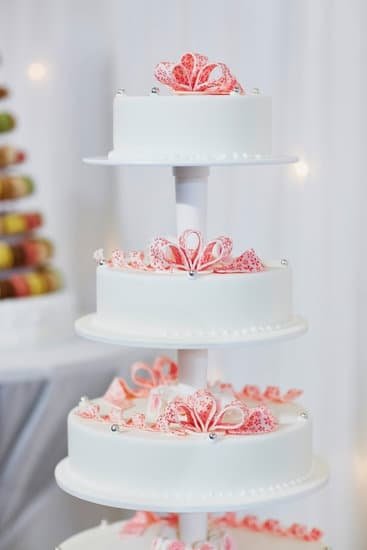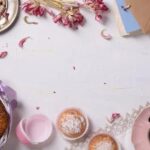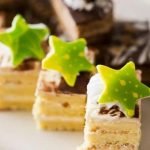Butterflies have long captivated the human imagination with their delicate beauty and enchanting presence. These graceful creatures have now fluttered their way into the world of cake decorating, adding a touch of whimsy and elegance to edible creations. In this article, we will explore the enduring fascination for butterflies in cake decoration, delve into the symbolism behind their presence in cake designs, and discover the various techniques and inspirations for incorporating these winged wonders into our sweet creations.
Throughout history, butterflies have been cherished for their vibrant colors and symbolic representation of transformation. From ancient civilizations to modern times, these creatures have been associated with personal growth, new beginnings, and the celebration of life’s milestones. In cake design, butterflies are often used to mark special occasions like birthdays and weddings, serving as a powerful metaphor for the transformative journeys we embark upon.
As cake decorators seek to capture the essence of these magnificent insects in their creations, they draw inspiration from the vast array of butterfly species that exist. Monarchs with their bold orange hues and intricate patterns, swallowtails with their striking wingspan, or even peacock butterflies with their iridescent beauty – each species offers its own unique characteristics that can be translated into captivating cake designs.
Incorporating butterflies into cakes can be done through various techniques such as hand-painted designs, edible wafer paper butterflies or intricate fondant decorations. The possibilities are endless when it comes to adding these mesmerizing creatures to our confectionery creations. Whether you aim for a realistic portrayal or a more whimsical interpretation, there is a technique suited to your skill level and vision.
Join us on this journey as we explore the magic of butterflies in cake decorating. Discover how color palettes can be carefully chosen to create stunning butterfly-inspired cake designs. Learn about the pros and cons of using edible versus non-edible butterfly decorations. And uncover tips and tricks for creating mesmerizing cake designs using DIY butterfly templates and stencils. Embrace the timeless beauty of butterflies and let your creativity take flight in the world of cake decorating.
Butterflies as a Symbol of Transformation in Cake Design
Butterflies have long been associated with transformation and growth, making them the perfect symbol to incorporate into cake designs for life’s important moments. From birthdays to weddings, butterflies add a touch of whimsy and beauty that can truly elevate any cake. In this section, we will delve into the significance of using butterflies in cake design and explore how they embody the spirit of transformation.
Butterflies symbolize various stages of life, from caterpillar to chrysalis to the emergence of a vibrant butterfly. This symbolism resonates with many individuals, making butterfly-themed cakes a popular choice for milestone celebrations like birthdays and weddings. The inclusion of butterflies on these special occasions signifies personal growth, change, and new beginnings.
When incorporating butterflies into cake designs, decorators often take inspiration from the butterfly’s vibrant colors and delicate wings. Monarch butterflies, known for their striking orange and black patterns, are a common choice for cake decorations. Swallowtails with their gracefully elongated tails and peacock butterflies with their dazzling hues are also popular options.
To create realistic butterfly decorations on cakes, decorators can utilize various techniques such as hand-painting designs directly onto the cake surface or using edible wafer paper or fondant to craft intricate butterfly shapes. Each technique offers its own unique advantages and level of complexity.
For those who prefer to use edible decorations on their cakes, edible wafer paper provides a versatile medium that allows for detailed butterfly designs with ease. Edible wafer paper butterflies can be purchased pre-made or created using butterfly templates and stencils.
On the other hand, creating intricate fondant butterfly decorations requires advanced skill in fondant work but results in visually stunning 3D effects that truly bring cakes to life. Fondant allows decorators to sculpt lifelike textures and add intricate details like embossing or dusting with edible paints for added realism.
No matter which technique is chosen, incorporating butterflies into cake designs adds a touch of enchantment and elegance. It is important to note that the symbolism of butterflies extends beyond birthdays and weddings – they can also be used to celebrate personal journeys, achievements, or transformations.
In the next section, we will explore the various types of butterflies that inspire cake decorators and their unique characteristics and color patterns. Additionally, we will provide step-by-step instructions and tips for different cake decorating techniques to incorporate butterflies into design.
| Butterfly Species | Unique Characteristics |
|---|---|
| Monarch Butterflies | Striking orange and black patterns |
| Swallowtails | Elongated tails, vibrant colors |
| Peacock Butterflies | Dazzling hues with eye-like markings |
Types of Butterflies That Inspire Cake Decorators
Butterflies are not only beautiful creatures in nature, but they also serve as an endless source of inspiration for cake decorators. With their vibrant colors and delicate patterns, different butterfly species can bring a sense of wonder and whimsy to any cake design. Cake decorators often draw from the unique characteristics of various butterflies to create stunning and visually captivating cakes.
One popular butterfly species that frequently inspires cake decorators is the Monarch butterfly. With its distinctive black and orange wings, the Monarch symbolizes grace and beauty. These butterflies are often associated with celebrations of life’s milestones, making them a perfect choice for birthday cakes or wedding creations.
Another butterfly species that sparks the imagination of cake decorators is the Swallowtail butterfly. Known for their striking wing patterns, these butterflies come in a variety of colors, including yellow, black, and blue. The Swallowtail’s elegant appearance makes it a popular choice for intricate and detailed cake designs.
In addition to the Monarch and Swallowtail butterflies, peacock butterflies also serve as a major source of inspiration for cake decorators. As their name suggests, these butterflies showcase mesmerizing shades of iridescent blues and greens on their wings. Symbolizing beauty and transformation, incorporating peacock butterflies into cake designs can instantly elevate the overall aesthetic.
When using specific butterfly species as inspiration for cake decoration, it is essential to pay attention to their unique characteristics and color patterns. By taking note of these details, cake decorators can create realistic representations or use them as starting points for more imaginative designs. Whether it be through hand-painted creations or carefully crafted fondant decorations, the possibilities are endless when it comes to creating butterfly-inspired cakes.
Popular Techniques for Adding Butterflies to Cake Designs
When it comes to adding butterflies to cake designs, there are various popular techniques that can be used to create stunning and visually appealing creations. Cake decorators have developed unique methods to incorporate these delicate creatures into their designs, ranging from hand-painted designs to intricate fondant decorations. Below are some of the most popular techniques for adding butterflies to cake designs:
- Hand-Painted Designs: One of the most artistic ways to add butterflies to a cake is through hand-painted designs. Using food-safe paints and brushes, cake decorators can meticulously paint realistic butterflies directly onto the surface of the cake. This technique allows for creativity and customization as decorators can choose colors, patterns, and even blend multiple butterfly species together.
- Edible Wafer Paper Butterflies: Another popular technique is using edible wafer paper butterflies. These delicate decorations are made from thin sheets of wafer paper that have been printed or colored with edible ink. The butterflies can be cut out individually or using special punches and then attached to the cake using edible glue or icing. This technique provides a lightweight and ethereal look to the butterfly decorations.
- Intricate Fondant Decorations: Fondant is a versatile icing-like substance that can be molded into various shapes and designs. Cake decorators often use fondant to create intricate butterfly decorations with lifelike details. By sculpting or using silicone molds, decorators can mold fondant into different butterfly shapes and then paint them with edible colors for added realism.
Each of these techniques requires different skill levels and tools, but they all contribute to creating beautiful butterfly-inspired cake designs that will surely impress any audience.
| Technique | Description |
|---|---|
| Hand-Painted Designs | Cake decorators use food-safe paints and brushes to meticulously paint realistic butterflies directly onto the surface of a cake allowing for creativity and customization. |
| Edible Wafer Paper Butterflies | Delicate decorations made from thin sheets of wafer paper that are printed or colored with edible ink and attached to the cake using edible glue or icing. |
| Intricate Fondant Decorations | Fondant is molded into different butterfly shapes, painted with edible colors, and provides lifelike details to create intricate butterfly decorations. |
Colors and Palettes
When it comes to creating a butterfly-inspired cake design, one of the key considerations is the color palette. The colors used in the cake can play a significant role in capturing the essence of butterflies and bringing the design to life. By understanding color theory and exploring different shades, you can create a visually striking butterfly-themed cake that will surely impress.
One popular approach to selecting colors for a butterfly-themed cake is to draw inspiration directly from real butterfly species. Each butterfly species has its own unique characteristics and color patterns, making them an abundant source of inspiration. For example, monarch butterflies are known for their vibrant orange and black wings, while swallowtail butterflies often have striking combinations of yellow, blue, and black.
Peacock butterflies are named after their beautiful patterns resembling those found on peacock feathers. By researching and studying these different species, you can identify specific color combinations that resonate with your vision.
In addition to drawing inspiration from real butterflies, you can also explore other artistic avenues when choosing a color palette for your cake design. Consider experimenting with complementary colors that help create a harmonious balance. Complementary colors are opposite each other on the color wheel, such as red and green or blue and orange. They create a dynamic contrast that adds depth and visual interest to your cake design.
Once you have selected a color palette for your butterfly-inspired cake design, it’s important to ensure that the colors are implemented effectively throughout the entire cake creation process. Using buttercream or fondant icing in various shades can help bring out the desired colors in your design. You may also consider using airbrushing techniques or food coloring gels to achieve more intricate color details.
By carefully choosing the right colors and implementing them strategically within your cake design, you can create a visually stunning masterpiece inspired by the beauty of butterflies. Whether you opt for vivid rainbow hues or soft pastel tones reminiscent of garden flowers, let your creativity soar as you embrace the enchanting world of butterfly-inspired cake decorating.
Creating Realistic Butterflies
When designing butterfly-themed cakes, one of the crucial decisions to make is whether to use edible or non-edible decorations for the butterflies. Both options have their merits, and the choice ultimately depends on personal preferences and specific requirements for the cake design. In this section, we will compare the two options and provide guidance on how to choose between them.
Edible Butterfly Decorations
One of the advantages of using edible butterfly decorations is that they add an extra layer of realism to the cake design. Made from edible materials such as wafer paper or gum paste, these decorations can be shaped and colored to closely resemble actual butterflies. Edible butterflies are a popular choice for cakes meant to be consumed, as they do not pose any safety concerns when eaten.
To create edible butterfly decorations, one option is using wafer paper. This delicate material is thin and easily pliable, making it ideal for creating intricate details on butterfly wings. Using food coloring or edible paints, decorators can achieve vibrant colors and realistic patterns on wafer paper butterflies.
Another option for creating edible decorations is by using gum paste or fondant. These materials are more sculptable than wafer paper, allowing decorators to create 3D butterflies with greater dimensionality. Gum paste can be molded into different shapes while fondant offers a smoother finish. Both options allow for hand-painted details that further enhance the lifelike appearance of the butterflies.
Non-Edible Butterfly Decorations
Non-edible butterfly decorations offer durability and a longer-lasting presence on cake designs. While they cannot be consumed and must be removed before serving, they provide a more permanent keepsake for special occasions such as weddings or anniversaries. Non-edible options include plastic or fabric butterflies specifically designed for cake decoration purposes.
Plastic butterflies are often made from food-safe materials, ensuring that they are safe to be placed on a cake. These decorations come in various sizes and can have intricate details that mimic the appearance of real butterflies. They are easy to handle and position on cakes, making them a popular choice for decorators who want a hassle-free option.
Fabric butterflies, on the other hand, offer a softer and more delicate touch to cake designs. These butterflies are typically made from lightweight fabric or lace and can be easily attached using wires or toothpicks. Fabric butterflies provide an ethereal quality to the overall design and can be reused for different occasions if handled with care.
Butterflies and Flavors
When it comes to cake decorating, choosing the right flavors is just as important as crafting a visually stunning design. Incorporating butterfly decorations into cakes opens up a world of creative possibilities for flavor combinations that perfectly complement the overall aesthetic. Here, we will explore some delectable cake flavors and fillings that elevate the beauty and taste of butterfly-themed creations.
1. Light and Citrusy Delights:
For a refreshing twist, consider pairing lemon poppy seed cake with a citrus buttercream frosting. The zesty flavors will harmonize beautifully with the vibrant colors often associated with butterflies. Alternatively, an orange blossom cake filled with lime curd can create a delightful burst of citrusy goodness.
2. Decadent Chocolate Indulgences:
Chocolate lovers rejoice. A rich chocolate cake paired with raspberry filling not only adds a pop of color reminiscent of butterflies but also provides a luscious combination of sweet and tangy flavors. For those who prefer nutty undertones, combining hazelnut praline cake with dark chocolate ganache is sure to be a crowd-pleaser.
3. Elegant Floral Infusions:
To enhance the delicate nature of butterfly-themed cakes, floral flavors can work wonders. A moist lavender cake adorned with lavender-infused buttercream transports taste buds to a fragrant garden, while pairing it with blackberry or elderflower filling adds fruity nuances. Similarly, a rosewater sponge cake layered with lychee mousse offers a wonderful blend of floral and exotic fruit notes.
4. Classic Vanilla Bliss:
For those who appreciate simplicity but still want to make their butterfly cakes shine, classic vanilla is always an excellent choice. Pairing vanilla bean cake layers with fresh strawberry compote creates an enchanting combination that matches well with any butterfly design. Alternatively, infusing vanilla sponge with hints of almond elevates the flavor profile while still allowing the butterfly decorations to take center stage.
By carefully selecting the right flavors and fillings, cake decorators can create a harmonious balance between taste and visual appeal when incorporating butterfly decorations. Whether it’s a light and citrusy creation, a decadent chocolate indulgence, an elegant floral infusion, or a classic vanilla bliss, there are countless possibilities for creating delightful butterfly-themed cakes that are truly a feast for the senses.
So next time you embark on a cake decorating journey inspired by these enchanting creatures, consider experimenting with flavors that will leave your guests in awe.
DIY Butterfly Templates and Stencils for Easy Cake Decorating
When it comes to cake decorating, adding intricate butterfly designs can elevate a simple cake into a stunning masterpiece. However, not everyone may have the artistic ability or resources to create detailed butterfly decorations from scratch. That’s where DIY butterfly templates and stencils come in handy.
Using DIY butterfly templates and stencils for cake decorating is a fantastic way to achieve professional-looking results without too much effort. These pre-designed outlines allow both beginners and experienced decorators to create beautiful butterfly designs on their cakes. Whether you prefer a realistic monarch or a whimsical patterned butterfly, there are countless options available.
To use these templates effectively, start by printing or tracing your chosen design onto cardstock or acetate sheets. Make sure to adjust the size of the template according to your cake’s dimensions. Carefully cut out the butterfly shape along the outline using sharp scissors or craft knives.
Next, place the stencil directly onto your frosted cake and secure it with toothpicks if necessary. You can choose to either sprinkle powdered sugar or cocoa powder over the stencil for a classic silhouette effect or use food-safe spray paint for more vibrant colors and unique patterns.
For those who prefer working with fondant or gum paste, you can use the templates as guides to cut out butterfly shapes from these mediums and then attach them onto your cake using edible glue or water. Additionally, you can trace the outlines of the butterflies onto rolled-out fondant and then carefully cut them out with a knife.
The versatility of DIY butterfly templates and stencils allows decorators to create endless combinations of designs by layering different sizes and shapes or incorporating various techniques like edible paints or edible sparkles. Furthermore, you can easily adapt these templates for other desserts such as cupcakes, cookies, or even macarons.
With a wide variety of styles available online, DIY butterfly templates and stencils provide an accessible way for anyone to add nature’s delicate beauty to their homemade baked creations. So, unleash your creativity, experiment with different designs, and bring the enchanting world of butterflies to life on your cakes.
Butterflies Beyond Cakes
Butterflies bring a sense of enchantment and whimsy to any cake design, but their beauty and charm can go beyond just cakes. By incorporating butterfly motifs into other desserts and treats, such as cupcakes, cookies, and macarons, you can create a cohesive theme throughout your entire dessert spread. Whether you’re hosting a birthday party or a bridal shower, these butterfly-inspired treats will surely impress your guests.
One popular way to incorporate butterflies into other desserts is through decorated cupcakes. You can use the same techniques mentioned earlier for cake designs, such as hand-painting or using edible wafer paper butterflies. Simply frost your cupcakes with a smooth layer of buttercream or fondant and then add small edible butterflies on top for an eye-catching effect. You can also try piping delicate butterfly shapes using colored royal icing to make your cupcakes truly stand out.
Cookies are another canvas to showcase butterfly designs. Use butterfly-shaped cookie cutters to create the base for your designs and then decorate them using colorful royal icing or edible food markers. For a more intricate look, you can also try using stencils specifically designed for cookies to achieve precise butterfly patterns with ease. These butterfly-themed cookies can be individually wrapped or displayed in an arrangement, making them perfect as party favors or decorative centerpieces.
For those who want to take their dessert presentation up a notch, why not experiment with butterfly-inspired macarons? These delicate French treats provide the perfect canvas for artistic creations. Use food coloring to dye the macaron shells in vibrant hues reminiscent of real butterflies’ wings.
Then, fill them with flavored buttercream or ganache that complements the colors and flavors of the macarons themselves. Finally, use a piping bag fitted with a small round tip to pipe detailed butterfly patterns on top of each macaron shell before sandwiching them together.
By extending the theme of butterflies to other desserts and treats, you can create a visually stunning and cohesive dessert table that will captivate your guests. The key is to have fun with the design process and let your creativity soar. Embrace the timeless beauty of butterflies and infuse their enchantment into every sweet treat you make.
Conclusion
In conclusion, butterflies have long captured our imaginations and continue to be a beloved motif in the world of cake decorating. The enchanting transformation that butterflies symbolize makes them the perfect addition to any cake design, whether it’s for a birthday celebration or a wedding. Their colorful beauty and graceful presence bring an element of elegance and magic to any dessert table.
Throughout this article, we’ve explored various ways to incorporate butterflies into cake designs, from hand-painted creations to delicate wafer paper decorations. We’ve discussed the importance of color theory and provided inspiration for creating visually striking butterfly-themed cakes. Additionally, we’ve delved into the debate of edible versus non-edible butterfly decorations and offered recommendations for pairing delicious flavors with butterfly designs.
The possibilities are truly endless when it comes to incorporating butterflies into cake decorating. Whether you’re a skilled professional or a beginner eager to try your hand at this art form, downloadable templates and stencils are available to help you create stunning designs with ease. And don’t limit yourself to just cakes – cupcakes, cookies, and macarons can also receive the butterfly treatment.
In embracing the timeless beauty of butterfly-inspired cake decorating, we encourage you to unlock your creativity and let your imagination take flight. The allure of these delicate creatures will continue to captivate us for generations to come, adding a touch of enchantment to our most memorable occasions. So go ahead and infuse your cake creations with the elegance of butterflies – they are sure to leave a lasting impression on all who behold them.
Frequently Asked Questions
How do you put butterflies on a cake?
To put butterflies on a cake, there are a few simple steps you can follow. First, gather the necessary supplies, including edible butterflies or butterfly-shaped fondant cutouts, a small amount of frosting or icing, and your fully decorated cake. You can find edible butterflies at specialty baking supply stores or online retailers. Once you have your supplies ready, carefully place the edible butterflies onto the surface of the cake where you want them to be positioned.
Gently press them into the frosting or icing so that they adhere securely but do not get crushed. Take care to arrange them in an aesthetically pleasing way, considering factors such as color coordination and balance. If using fondant cutouts instead of edible butterflies, you can attach them by dabbing a small amount of water onto the back of each cutout and pressing it onto the cake’s surface. With these methods, you can effortlessly add beautiful butterfly decorations to your cake.
What are the ingredients in edible butterflies?
The ingredients for edible butterflies depend on whether you choose to make them from scratch or purchase pre-made ones. If making homemade edible butterflies, common ingredients may include colored gelatin sheets or wafer paper, food coloring (if desired), water or a mixture of water and corn syrup for adhering layers together, and possibly some flavor extracts for added taste if desired. These ingredients are typically all-natural and safe for consumption as long as they are specifically labeled for food use.
However, if buying commercial edible butterflies from reputable manufacturers, they may contain different components depending on the brand and type of product. In general, though, commercial edible butterfly decorations often utilize starches like potato starch as well as food colorings derived from natural sources such as fruit juices or vegetable extracts.
How to make butterfly icing decorations?
Making butterfly icing decorations requires attention to detail and some basic tools commonly found in baking supply stores or online retailers. First off, ensure you have a batch of prepared buttercream icing that is smooth and at the right consistency for creating decorations. You will also need pastry bags and various piping tips in different sizes and shapes, such as a petal tip or round tip, to create the butterfly’s body, wings, and decorative details like antennae. To make butterfly icing decorations, start by filling a pastry bag fitted with the desired piping tip with your buttercream icing. Begin by piping the body of the butterfly onto a parchment paper or silicone mat-covered surface.
Next, pipe two sets of wings on either side of the body by using smooth motions to create delicate wing shapes. It is important to alternate your piping hand between left and right sides to maintain symmetry. Finally, add any embellishments or details using smaller piping tips, such as dots or lines for eyes, colorful accents on the wings, or even piped antennae. Let the icing decorations dry and harden before gently removing them from their surface and carefully placing them atop your cake for a beautiful finishing touch.

Welcome to our cake decorating blog! My name is Destiny Flores, and I am the proud owner of a cake decorating business named Cake Karma. Our mission is to provide delicious, beautiful cakes for all occasions. We specialize in creating custom cakes that are tailored specifically to each customer’s individual needs and tastes.





